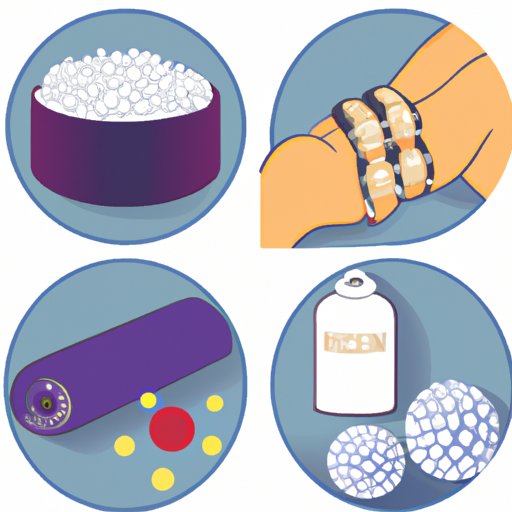Introduction
Sore muscles are a common side effect of any physical activity, especially when you’re just starting out or increasing your intensity. Thankfully, there are plenty of ways to help reduce and prevent muscle soreness so you can stay active and keep pushing yourself to reach your goals. In this article, we’ll explore eight methods that can help you relieve sore muscles after a workout.

Take a Hot Bath or Shower
Taking a hot bath or shower is one of the best ways to relieve sore muscles after a workout. The warmth of the water helps relax your muscles, allowing lactic acid (which is responsible for causing soreness) to be released from your body. It also helps increase circulation, which in turn reduces inflammation and pain.
When taking a hot bath or shower, keep the water at a temperature between 90-105°F (32-40°C). Soak in the water for 15-20 minutes, and don’t forget to use a gentle soap to wash away any sweat and dirt. You can also add essential oils, Epsom salts, or baking soda to the water to further enhance its effects.
Use a Foam Roller
Foam rollers are great tools for relieving muscle tension and soreness. They work by gently massaging your muscles and breaking up knots, which helps improve blood flow, reduce inflammation, and ease discomfort. Foam rolling can also help break down scar tissue, which can help reduce chronic pain.
When using a foam roller, start at the top of your body and slowly roll down, applying pressure as needed. Take your time and focus on areas that are particularly tight or sore. You can also use the foam roller to target specific muscle groups such as your glutes, hamstrings, or upper back.
Get a Massage
Getting a massage is another great way to relieve sore muscles after a workout. Massages can help reduce inflammation, improve circulation, and promote relaxation. They can also help break up knots and trigger points, which can help reduce chronic pain and improve range of motion.
When getting a massage, make sure to communicate with your masseuse and let them know where you feel the most tension or soreness. Ask them to focus on those areas and apply extra pressure if needed. Make sure to drink plenty of water afterwards to help flush out toxins and promote healing.
Stretch and Do Yoga
Stretching and doing yoga are great ways to help reduce muscle soreness after a workout. Stretching helps improve flexibility, which can reduce the risk of injury and help prevent muscle soreness. Doing yoga can also help reduce muscle tension and improve your posture, which can help prevent future soreness.
When stretching, focus on the major muscle groups that you worked during your workout. Hold each stretch for 10-30 seconds, and avoid bouncing or forcing your body into uncomfortable positions. When doing yoga, focus on poses that target the areas where you feel the most soreness or tension.

Apply Heat or Ice Packs
Applying heat or ice packs to sore muscles can help reduce inflammation and pain. Heat helps increase circulation and loosen up tight muscles, while cold can help numb pain and reduce swelling. Depending on the severity of your soreness, you may want to alternate between the two.
It’s important to note that heat should only be used for acute injuries, while cold should be used for chronic pain. For the best results, apply the heat or ice pack for 10-15 minutes at a time, and take breaks in between applications.
Take an Epsom Salt Bath
Epsom salt baths are a great way to help relieve muscle soreness after a workout. The magnesium sulfate in the salt helps reduce inflammation and relax your muscles, while the warm water helps increase circulation and flush out toxins. This can help speed up the recovery process and reduce pain.
When taking an Epsom salt bath, use 1-2 cups of salt per bath. Soak for 15-20 minutes, and don’t forget to drink plenty of water afterwards. You can also add essential oils or herbs to the water to further enhance its effects.
Conclusion
Sore muscles are a common side effect of any physical activity, but there are plenty of ways to help reduce and prevent muscle soreness. From taking a hot bath or shower to using a foam roller and applying heat or ice packs, these eight methods can help you relieve sore muscles after a workout and keep pushing yourself to reach your goals.
Remember to listen to your body and give it the rest it needs. If the soreness persists, talk to your doctor or physical therapist. With the right care, you can stay active and enjoy all the benefits that come with it.
(Note: Is this article not meeting your expectations? Do you have knowledge or insights to share? Unlock new opportunities and expand your reach by joining our authors team. Click Registration to join us and share your expertise with our readers.)
